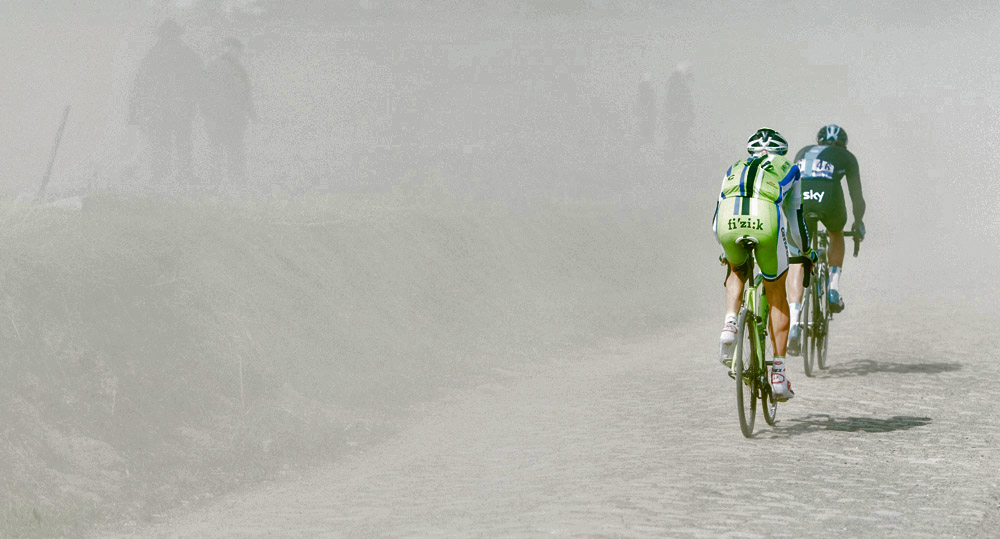The Ideal Tires For Paris-Roubaix?
Before there was gravel, there was Paris-Roubaix. The famous race used to be a relic from a past when many races of northern Europe went over cobblestones. While other races – especially the Tour de France – became ‘sanitized,’ the Queen of the Classics played up its image as the ‘Hell of the North.’ The cobblestones were given monument status, and the race continued to finish in the velodrome of Roubaix, a gritty industrial city in northern France. Velodrome finishes were common practice in the days before advertising financed the races: The organizers needed the entry fees from the spectators who came to see the finish…
Paris-Roubaix is a wonderful throwback to the Heroic Age of bicycle racing, but it also presaged the future with its focus on challenge and adventure – and less-than-smooth road surfaces. In fact, the first gravel races in the U.S. – before ‘gravel’ became a thing – usually included ‘Roubaix’ in their name, and some still do: The 2021 Barry Roubaix in Michigan was just last weekend, organized by my friend Matt Acker. And this year, by putting the women’s race on equal footing with the men’s, Paris-Roubaix is definitely looking like the future of racing.
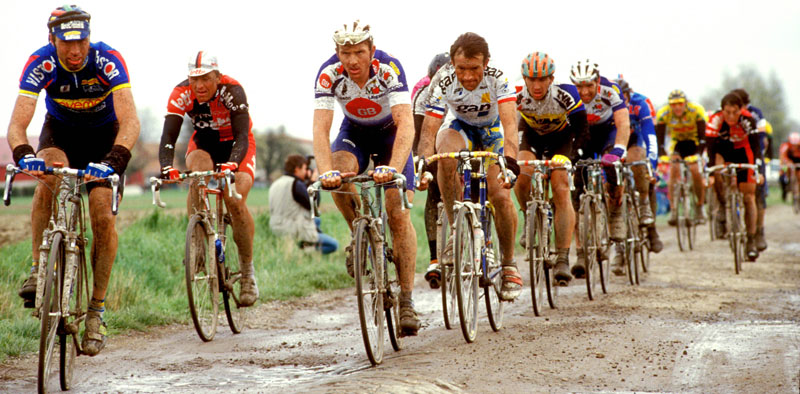
Many times over the years, I’ve wondered: What would be the best tire for Paris-Roubaix? Back when I was racing, the consensus among pros was to run tires one size up from their normal road tires – which meant 25 mm back in the days when we raced on 21 and 23 mm tires. Some teams experimented with suspension to take the edge of the biggest bumps (above in the 1994 race)… Suspension is a thing of the past, but otherwise the same ‘one size up’ rule applies today. Except that 25 mm tires are now the standard road size, and ‘one size up’ means 28 or 32 mm tires these days. That’s based less on science and more just on gut feel.
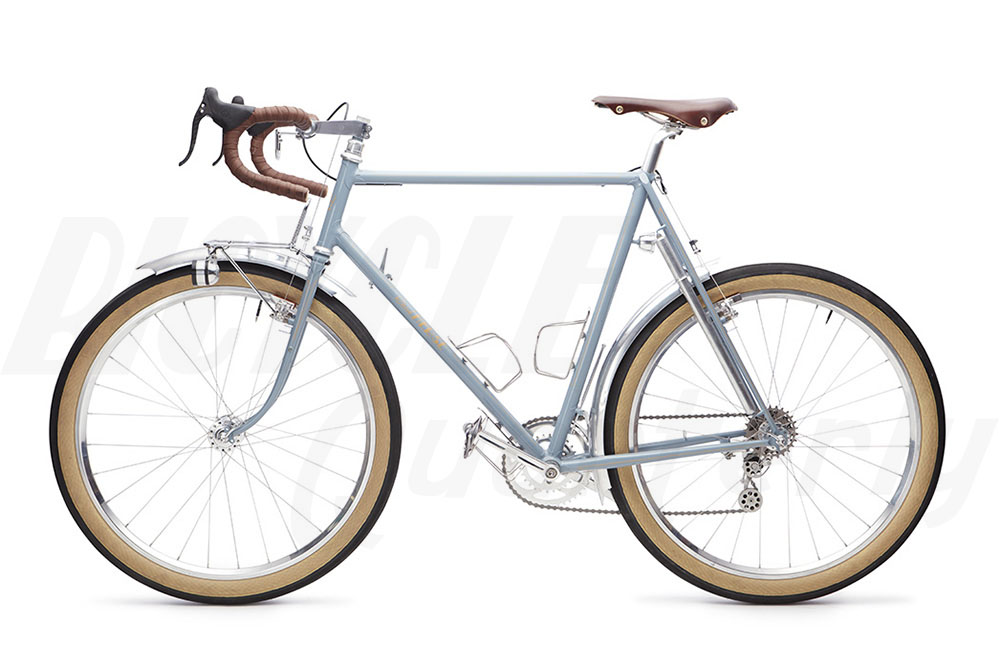
When I was riding the Oregon Outback two weeks ago, Paris-Roubaix came to mind again. The first 115 km (72 miles) of the course, on the OC&E Trail, are about as rough and bumpy as the cobblestones of the ‘Hell of the North.’ Having ridden that course three times now, on 42 and 54 mm tires, I know I was much faster on the 54s (above).
The cobblestone ‘sectors’ make up only 20% of Paris-Roubaix, so one important question is how much you’d give up with ultra-wide tires on the smooth paved sections of the race. The proportions of the Oregon Outback are the other way around: About 25% of the Outback are on pavement.
The best test of ultra-wide tires is riding two otherwise identical bikes side-by-side and back-to-back with two identical riders, changing only the tire size. Second Bicycle Quarterly tester Mark and I are as close to identical riders as you can get, and we did test the Oregon Outback Rene Herse with 54 mm tires against my Paris-Brest-Paris bike with its 42 mm tires. We switched bikes numerous times during that test, climbing, sprinting and just riding along. The verdict: Both are equally fast on pavement. At least for us, the 54 mm tires don’t slow us down, even on smooth roads. (The full story of that test is in the Autumn 2021 Bicycle Quarterly).
Does that make the Oregon Outback bike the perfect bike for Paris-Roubaix – assuming we remove the UCI-illegal fenders and ditch the not-needed lights and bag/rack? Not necessarily.
Aerodynamics play a bigger role at the higher speeds of a professional race. It’s not just that wider tires have a greater frontal area, but they also don’t work well with aero wheels. A good aero shape needs to be about 3-5 times as long as it is wide, and with a 54 mm tire, that means a rim that is 150-250 mm tall. At that point, you might just go straight to a disc wheel… So if you want aero wheels, wide tires aren’t your best choice. However, wheel aerodynamics are often overestimated. Our own testing showed that even on aero wheels optimized for 28-32 mm tires, 44 mm tires aren’t significantly slower than 32s. For Paris-Roubaix, I’m certain that the large gains on the cobbles would easily make up for the very small aero losses on the smooth sections.
Another factor: Paris-Roubaix isn’t a time trial – although this year’s women’s race, with Lizzie Deignan solo-ing off the front for most of the race, certainly looked like one. The men’s race was more typical: It ended with a sprint finish. As much as I loved how my 54 mm tires at 19 psi (1.3 bar) floated across the rough and rocky gravel of the Oregon Outback, I wouldn’t want to contest a sprint finish on them. Of course, pro racers could inflate them to 35 or even 55 psi, and they’d feel as hard as 32s at 90 psi… but the pros would also give up some of the advantage on the cobbles.
Another factor is wheel size: Most pros have never ridden anything except 700C wheels, and if you just install super-wide tires on standard racing wheels, the increased rotational inertia makes the bike feel very different. You’ll notice this not just when you corner, but also when you rock the bike from side to side while climbing or sprinting out of the saddle. My Oregon Outback bike solves that issue by running smaller 26″ wheels, so the rotational inertia and feel of the bike is similar to a road bike with 700C x 32 mm tires.
Smaller wheels would also alleviate concerns sprint performance with the wider (and heavier) tires: The smaller wheels have the same rotational inertia. They will ‘spin up’ as quickly as larger 700C rims with skinnier tires. But running an unfamiliar wheel size is not something most pros would even consider.
What all this points out is a simple fact that is often overlooked: For professional racers, running equipment that is radically different from the competition carries a risk. What if the science, as convincing as it is on paper, overlooks an important factor? With the busy schedules of professional racing, there isn’t much time for testing equipment, especially when it’s as involved as testing different wheel sizes and perhaps even frames. Much safer to ride what everybody else is riding, and hope that you have better legs (and luck) on race day. That’s why we are seeing such incremental changes in the professional peloton. And recently, the UCI does what it can to ensure a level playing field, so that equipment choice doesn’t really affect the results. The only reason there is no limit on the maximum tire size in road racing – unlike cyclocross – is that nobody has won a race on radically different tires. (The UCI’s rules are reactive rather than proactive, so you have one chance to try new equipment before it gets outlawed if it’s successful.)
Gravel racers are much less bound by tradition than road racers. And they spend much more time on rough surfaces. Whereas Paris-Roubaix is just one event on the pro calendar, gravel racers think about tire choice all season long. I asked two top racers what they would have run, if they had raced Paris-Roubaix last weekend.
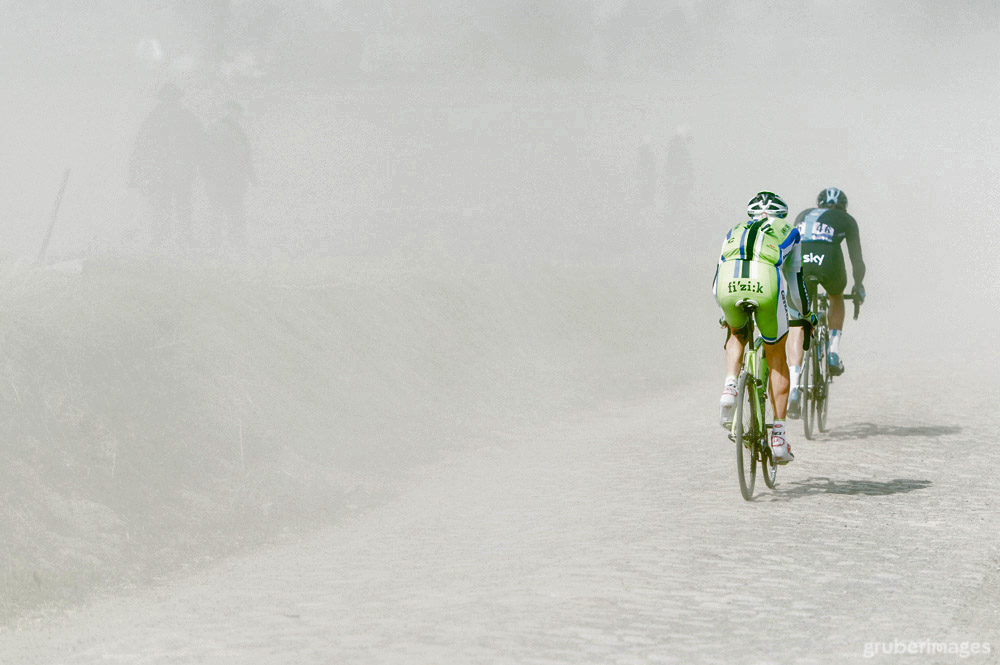
Ted King actually has raced in Paris-Roubaix four times – that’s him following Luke Rowe across the dusty cobbles in 2013. He remembered: “We rode 28 mm tubulars, at some pretty low pressures. The mechanics double-wrapped our handlebars, and then we hit the road.” His tire choice for gravel circuit has been simple: “My personal preference is to take a gauge at what most people are doing and then use ‘the next size up.’” Asked about what he’d ride in Paris-Roubaix now, his reply was: “If I were to ride it tomorrow as a solo ride, for sure I’d ride a wide tires. Maybe 38…? 44?” Considering that the ‘King of Gravel’ runs 32s on his road bike these days, the ‘next size up’ rule still seems to apply.
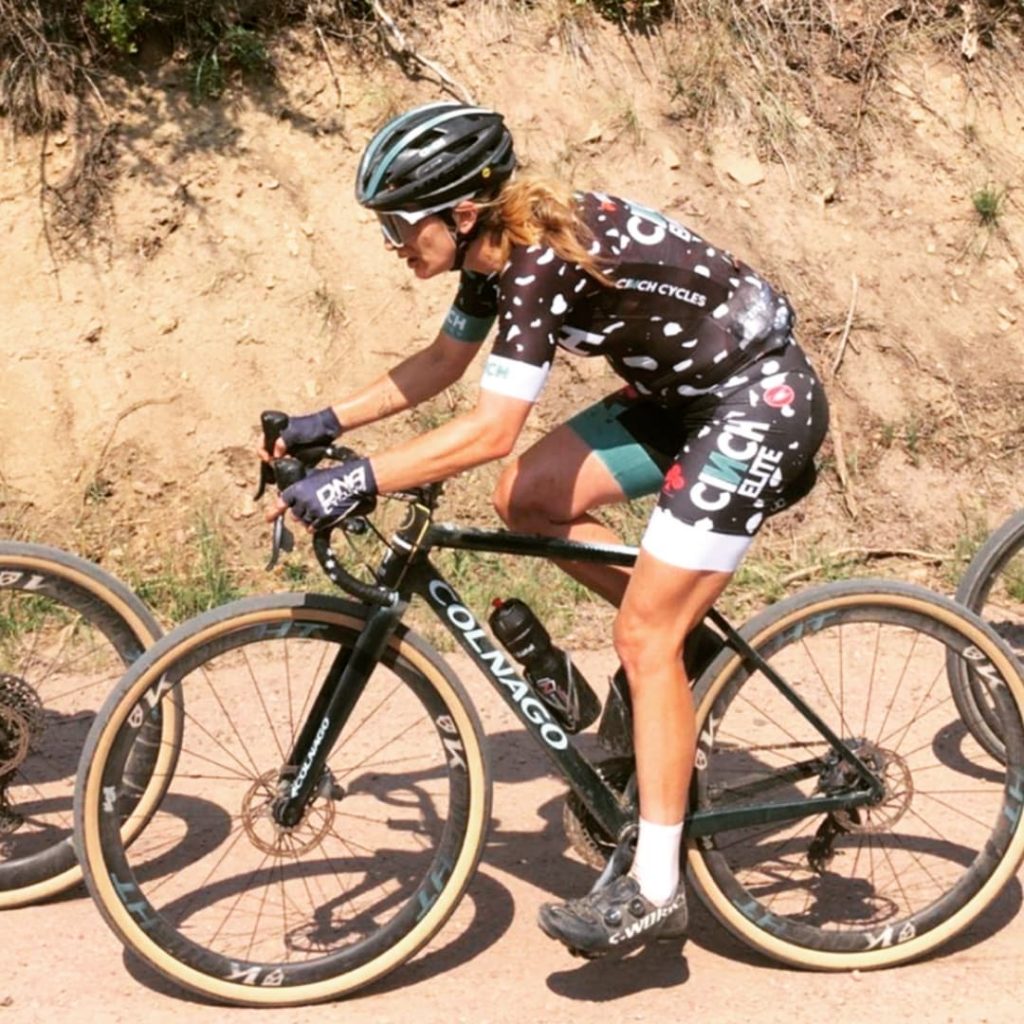
Lauren de Crescendo has been ripping through the gravel fields this year in a way that leaves no doubt: She would have been a contender in the first women’s Paris-Roubaix. Instead of racing on the French cobbles last weekend, she won the women’s race and finished second overall in the Rad Dirt in Trinidad, CO.
After looking at our testing and then doing some trials of their own, her Cinch Elite team has been riding 700C x 44 mm Snoqualmie Pass Extralights for most gravel races this season – with impressive results. Lauren’s choice for Paris-Roubaix? “44 mm Snoqualmie Pass for the width, and the Endurance casing for extra sidewall protection. Those roads looked gnar! And the extra width would be good on the wet cobbles.”
It’s interesting that Lauren would choose much wider tires – for her weight – than Ted. I think what we’re seeing here is a difference in tactics that actually makes sense. Lauren wins by dropping everybody and solo-ing off the front. Ted rides in the lead group as it whittles down more and more, until there are only a handful of riders left to contest the sprint. Lauren can play out the advantages of her equipment, while Ted needs to think about being well-matched to the other riders when the finish line approaches.
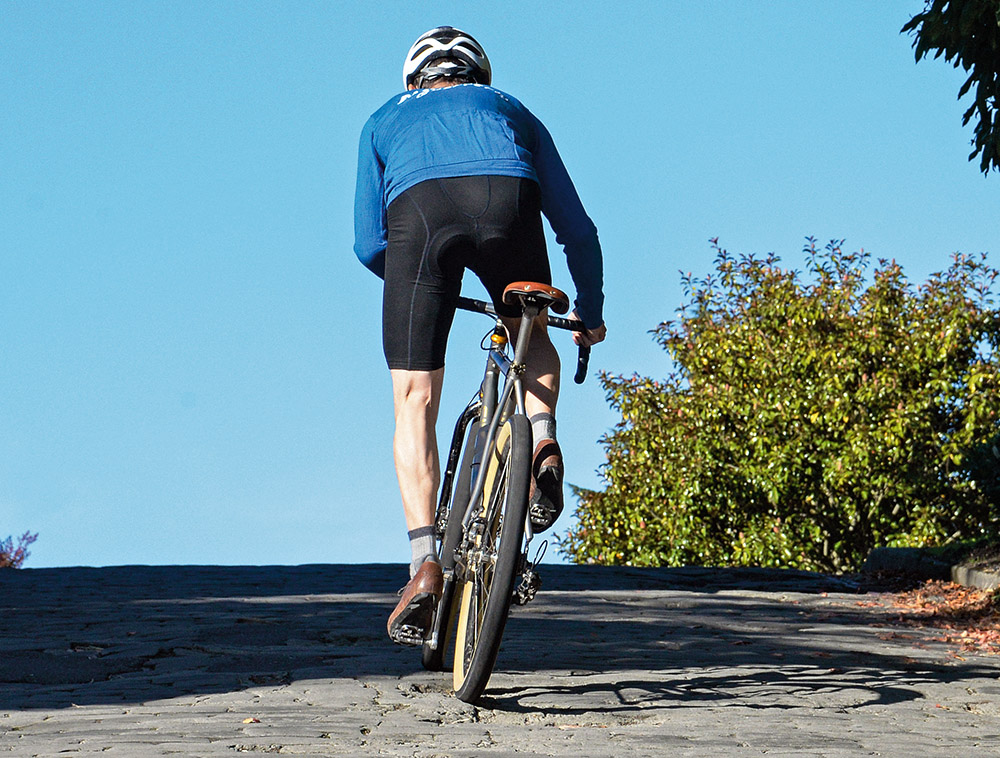
I think that is key to making wider tires work in Paris-Roubaix – it requires a change in strategy, not just new frames that can accept the wider tires (and smaller wheels). Key would be to use the much greater speed on the cobbles to have the entire team ride off the front, then build their lead with each cobble sector, until they arrive at the finish together and far in advance of the other racers. In other words, turn the race into a team time trial… Would it work? We’ll only find out if somebody tries. I know many pro teams read our Journal – please get in touch if you’re interested!
Let’s hope the UCI doesn’t read this, otherwise they might just limit tire sizes before anybody tries something so heretic! I can also see that many sponsors wouldn’t be happy. They want to sell road bikes for speed and gravel bikes for rough stuff. They aren’t keen to promote the idea of an all-road bike that can combine both categories into one truly versatile machine. And yet, the scientist in me would love to do this experiment. Just like the Oregon Outback FKT served as a real-world check for all our research into all-road bikes, figuring out the best tires for Paris-Roubaix would be an irresistible challenge.
Photo credits (used with permission): Jered Gruber (Photo 1); John Pierce/Photosport International (Photo 2)
Further Reading:
• The full story of the Oregon Outback Rene Herse is in the Autumn 2021 Bicycle Quarterly. Subscribe now to get your copy with our next mailing.
• To find out more about tire performance, wheel sizes and everything else that makes a bike fast, comfortable and reliable, check out our book The All-Road Bike Revolution.


